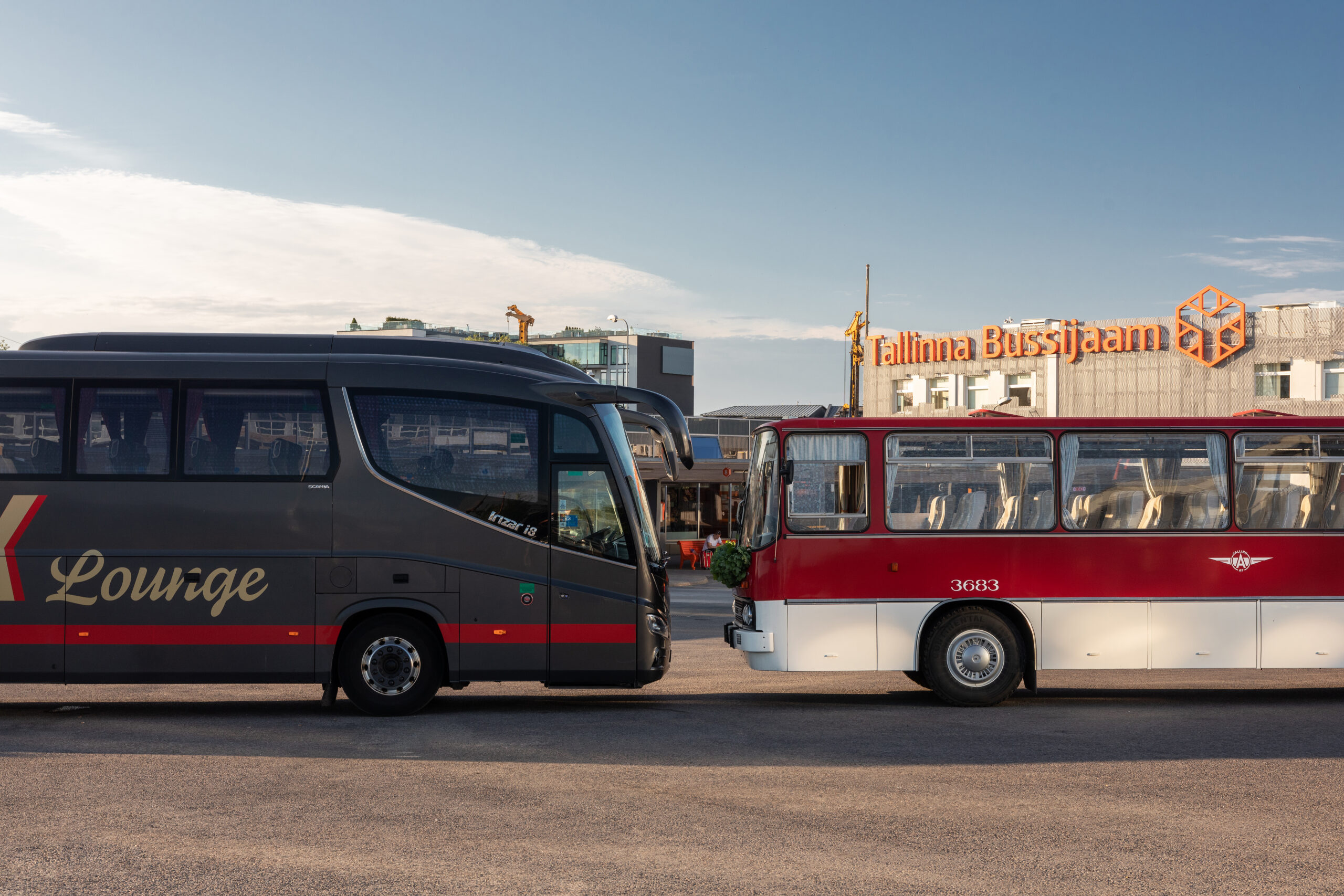By bus from one city to another – at first glance, it seems so simple and dispassionate! However, the reality is many times more meaningful and serious work has been done for a long time. Long gone are the days when bus travel was just transportation in its simplest form. Travelling by bus brings culture, the opportunity to meet fellow people, economy and positive emotions to passengers.
The travel possibilities within Estonia a century ago and the vision of a person as a part of it probably seem both funny and simply unbelievable to most of us now. The limited possibilities of movement from one place to another are of course a well-known fact, which is still being dealt with and which can be compared to the city of Tallinn or the country of Estonia – something that can always be improved. However, the increase in the number of people who prefer to travel by bus is a clear sign that most of the work has already been done by now.
However, many people probably do not know that the first “buses” created for wider use in the 1920s were essentially trucks that went through a welding shed, the longest route of which was not from Tallinn to Tartu at all, but a bit shorter. Why? Keywords include capability, comfort and safety. Now it seems absurd that the brakes of the ZIS buses designed in 1956 were not proper. Based on this, it is no wonder that the passenger was seen only as an object of cargo and nothing more. The realisation that a person must feel well during the entire bus ride, and that travelling by bus can be both an economic and cultural activity, kept waiting for many decades. The same goes for the routes and infrastructure created for the needs of Estonians. LAZ with the old sad look and smell of fuel and from the circus of Ikarus buses, we have jumped into the age of entertainment centres on wheels.
Overcoming difficulties has always been facilitated by an important fact: the bus is the only vehicle for moving large groups that can be taken exactly where people need it – no rails, power lines or runways. The flexibility inherent in the bus service and the scattered population of Estonia work well for each other and have shaped the habits of Estonians to prefer bus travel. Bus travel can adapt to people’s needs as optimally as possible, and many services functioned in a substantive sense long before they were officially formulated, of which Cargobus is a very good example.
From where, where and how? As the experience of both Estonia and our neighbouring countries shows, the clarity of routes, transfers and the ticket system, as well as the proximity of bus stations to the city centre and the additional benefits offered, affect the speed of passengers’ bus travel. A bus should not be just a transport and a bus station just a dreary place for waiting with uncomfortable benches – fortunately, no one questions these views any more. Tallinn Bus Station, completed in 1965, is a pleasant place for both the beginning and the end of a trip. For many foreign specialists in the field, the cleanliness of Tallinn Bus Station is an attraction itself.
According to surveys, about 70% of passengers come to the Tallinn Bus Station up to 60 minutes before the trip and not just for every occasion, but with a much clearer purpose – who wants to strengthen their body before the trip, who wants to do a little work. In short: beautiful and comfortable buses and bus stations attract people to travel.
Lux Express buses have been a big and important, but not the only, breakthrough in this regard. It is not unusual that a driver driving from one end of Estonia to the other gets the feeling after ten minutes of driving behind a luxurious bus that he could instead enjoy the ride in the comfortable seat of this bus and perhaps also work or read a book at the same time. Estonia can rightly be proud because, in many countries, buses that are only available by exclusive special order are a daily reality for all people in Maarjamaa and a very reasonable amount.
Bus driving is an important form of public transportation, which T grupp OÜ acts as an important engine for keeping alive and comprehensively developing. Changing attitudes and habits in society may seem long and difficult at first, but by now, riding the bus is not a shame for anyone, regardless of status and income. In addition to personal comfort and benefit, a responsible person also thinks about the ecological footprint. This is not only a popular way of thinking but has major environmental and ethical implications. If earlier it was assumed that a colleague who came to a meeting in another city by bus had a broken car, now in the opposite situation they are asked quite often: “Why by car and not by bus?”
Facts from history:
- In 1922, the first five bus lines were opened, which began to transport people on a regular schedule.
- Before the Second World War, buses from Western European and American manufacturers were procured in Estonia, which was built and put together here.
- In 1956, the ZIS 127 (ZIS stands for Zavod imeni Stalina) and Ikarus 55 buses came on intercity trips, which, according to the authorities, were supposed to represent the great achievement of the Soviet Union, but were real Russian miracles.
- In 1959, the long-distance bus station in Tallinn was moved to its current location, and in 1965, the current building was opened there, which was renovated in 2012. In its current location, the bus station has been typical and familiar for almost three generations.
- As aviation developed in the early 2000s, a situation arose where a poor Estonian no longer bothered to travel to Sakamaa by bus. Therefore, Lux Express launched buses equipped with entertainment centres for distances up to 500 km. The time required is the same as flying, but buses are more convenient, they move from the city centre to the city centre, there you can use the Internet, watch movies and play games. Also, travelling by bus is safer and cheaper than travelling by own car.
Read the article from the news portal Delfi! (The article is in Estonian.)

Irizar i8 versus Ikarus 255 – today’s long-distance line versus the long-distance line of the past in Estonia.
Author: Sergei Zjuganov

 12550
12550 info@bussijaam.ee
info@bussijaam.ee Mon–Fri 08:00–19:00
Mon–Fri 08:00–19:00





